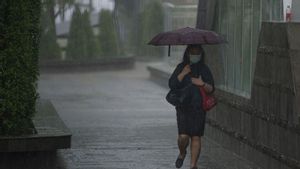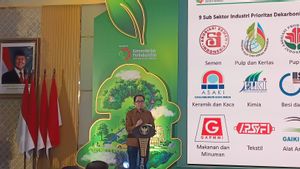JAKARTA - Greenland reportedly experienced a sharp surge in temperatures of 1.5 Celsius (C), occurring for the first time in the first decade of the century, compared to all other periods in the last 1,000 years.
A study initiated by Dr Maria Horhold, a glasiologist at Germany's Alfred Wegener Institute and lead author of the study, revealed the results of the tally. He said, between 2001 and 2011, Greenland the central-north part experienced an average temperature that reached 1.5 C warmer than the 20th century.
Horholod, who is not alone in carrying out this study, together with his colleagues, pointed out that a human-led activity had an impact in the region and could accelerate the rate of further ice loss from its layers.
It is known, more than three million cubic kilometers of water are stored on the Greenland ice sheet. If global emissions continue to rise, it is estimated that the region's ice sheet will add 50 centimeters of global average sea surface by 2100, potentially flooding many coastal cities around the world.
As part of the study, the researchers analyzed data collected from ice cores for more than a thousand years. The ice core or ice cylinder that was last drilled in 2011 from the Greenland ice sheet was essentially a freeze-out time capsule, where researchers could use it to reconstruct climates into the past.
"The time series we recovered from the ice core now continues for more than 1,000 years, from 1000 to 2011," Horhold said in a study published in the journal Nature this week.
"This data shows that the warm-up from 2001 to 2011 is clearly different from the natural variations over the last 1,000 years. Although it is highly expected given global warming, we are surprised by how real this difference is," he added.
This shows temperatures with slopes cooler during the first 800 years, then swaying up and down warmer to a sharp spike and suddenly hotter than the 1990s.
The spike in temperatures after 1995 is much larger than the pre-industrial period before the mid-19th century, so there is a possibility of near zero, it's nothing but the Horhold says is a human-induced climate change.
In addition to temperature, as reported by Metro, Saturday, January 21, researchers also reconstructed the production of melting ice sheets. As a result, the disbursement has increased substantially in Greenland since the 2000s and is now significantly contributing to the rise in global sea levels.
"We are amazed to see how close the inland temperature is connected to melting water drainage throughout Greenland, which, however, occurred in lowland areas along the edge of the ice sheet near the coast," Horhold said.
It took years to analyze ice core data. Hoerhold has a new core from 2019 but has not finished studying it. He expects the temperature rise to continue as Greenland's ice sheet and glacier have melted more rapidly recently.
The English, Chinese, Japanese, Arabic, and French versions are automatically generated by the AI. So there may still be inaccuracies in translating, please always see Indonesian as our main language. (system supported by DigitalSiber.id)













